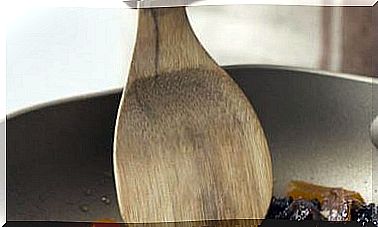6 Exercises To Go To The Bathroom Without Effort
How to fight constipation naturally
Products of all kinds against constipation are the best sellers in pharmacies and herbalists. The vast majority act by stimulating intestinal transit.
Now, the pace of this transit is different for each person: the average is 18-24 hours, although there are those who naturally have a slower pace, every 2 or even 3 days.
If the elimination is comfortable, without the need for exaggerated pushing, it is not considered constipation.
In many cases the difficulty is not in the traffic, which can be more or less fast depending on the person without this being a problem. The difficulty lies in the act of elimination: the feces have reached their destination in due time and form (pun intended), but there are difficulties in expulsion.
The rectum, the final portion of the digestive tract, is usually empty, but generally after breakfast it receives content for elimination. It relaxes, it dilates and that produces the feeling of wanting to go to the bathroom.
The first “call” is the most efficient for easy and complete removal. The entire mechanism is warning that it is in optimal condition to perform the task diligently.
If we neglect that first call, the feeling of need will disappear. The feces will be retained or stored in the rectum (something not recommended) and, when its volume increases again, the desire, with its new “batch”, will reappear.
If you feel bloated and heavy, with the online course Plan Detox in 7 days you will learn everything you need to cleanse your body in a healthy and safe way.
Better without rush
The morning rush often means that, since we were little, we do not answer that call. This, ignored, even stops showing up and we left the house without the tasks done. The bathrooms of others do not seem comfortable to us and we wait to return home, sometimes at the end of the day.
Disposal in the afternoon is then expensive. The retained stools have become dehydrated and the muscles, having retained the stools (or gases) in the rectum, have been active all day and no longer easily find the state of relaxation necessary to make way.
Thus, a very common constipation is generated whose origin is in the anorectal part, in the posterior part of the pelvic floor. In extreme cases, people who suffer from it close, without realizing it, the muscles at the time of elimination instead of relaxing it. They then make very intense push-pulls, which are the most common cause of pelvic floor abuse.
There is often talk of the need to strengthen the pelvic floor for various purposes, but very little about the convenience of learning to relax it when going to the bathroom. Just as the shoulders tense under stress, so can the pelvic floor and be unable to loosen to “let out.”
Be an animal of habit
Being animals of habit works in our favor when it comes to reinstating the habit of dedicating time and attention to the “call of the poop” in the morning and restoring harmony in this important daily process. It can be done and it is worth it.
This process is, in reality, a sensory reeducation, since it is about acquiring the habit of listening and interpreting the signals sent by our digestive system. These sensations tell us that the time has come to do our part: leave everything and go to the bathroom to authorize the “exit.”
The proposed exercises, inspired by the Perineum and Movement method of Blandine Calais-Germain, are simple, but they can be of great help to stimulate and identify these signals: your health, mood and well-being will win in many aspects.
The 7 habits that help you the most
To go to the bathroom painlessly and regularly, keep in mind:
- Leave a glass of water ready on your table to drink on an empty stomach.
- Include fermented foods such as black garlic, fermented vegetables, or miso in your diet . Try different ones, because what suits you is personal. Identify which fermented you like and feel better.
- Avoid foods that give you gas.
- Take prebiotics and probiotics.
- Take a few moments at the end of the day to practice abdominal breathing.
- Avoid declining the “invite” when it appears. Give it priority. Often we could, but we don’t consider it that important. It is.
- Be patient and persevere.









